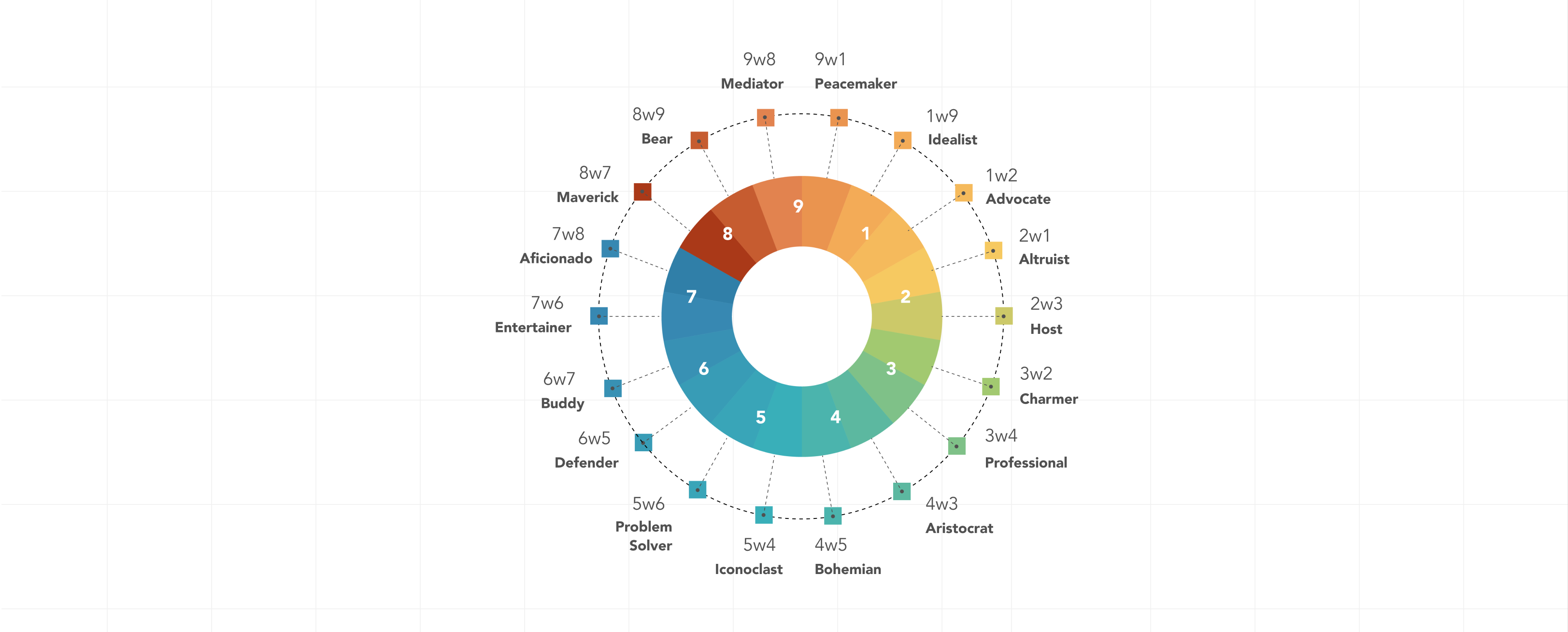
In the Enneagram, the combination of your type and your wing is called your “subtype.” If your base type is the main course that covers most of your personality, your wing is like a side dish that adds some flavor. It’s common for a person to read about their type and find that it sounds mostly like them, but it’s too broad. It’s often when they read their type/wing combination that they feel the description truly fits.
If we picture Enneagram numbers as a circle, the wing possibilities are located next to the type, on either side of it. For example, a type Six can have either a Five wing or a Seven wing, sometimes written as “6w5” and “6w7.” Your wing must fall to one side of your base type, so you can’t have a wing that’s not adjacent to your base type (e.g., there’s no such thing as a Six with a Nine wing). Each type can only have one wing, resulting in 18 possible personality subtypes.
Your base type is always dominant compared to your wing, but the relative role of your wing can vary depending on who you are and what you’re going through in your life. For example, a Nine with a strong One wing (9w1) may feel almost split between the Nine and the One, as if they’re 51% Nine and 49% One. In contrast, a different person who’s also a Nine with a One wing may feel like their wing has very little influence on their personality, as if they’re 99% Nine and 1% One. Some Enneagram scholars believe that the relative influence of your wing may change over time. For example, a Nine with an Eight wing (9w8) may feel that their Eight wing is gaining traction at certain periods in their life versus playing less of a role at other times.
Why do wings matter?
The concept of wings is important for two reasons. First, it allows us to describe people with an additional layer of depth beyond their base type. Type is an excellent way to characterize someone’s basic psyche and behaviors, but it’s limited to nine potential choices. Using a type-and-wing combination gives us 18 categories to which a person can belong and communicates even more nuanced personality descriptions. A 3w2 is often warm, energetic, and helpful, whereas a 3w4 is often introspective, imaginative, and private. Both are Threes, possessing the same core motivations and behaviors (e.g., they yearn to feel valuable), but their differing wings give them unique sheens. Plain and simply, 3w2s will be more “Two-like” than 3w4s, who will be more “Four-like.”
Second, knowing your own type and wing enables you to craft a tailored personal growth path that’s better suited to your needs. Threes become their highest selves—gracious, empathetic, authentic, and content—when they erode their fear that their personal worth is determined by others’ affirmations. Fours move towards self-actualization by transcending their fear of being without identity or personal significance. Armed with the knowledge of their Three and Four tendencies, a 3w4 can engage in challenging, albeit precise, personal development work, focused on deeply examining and healing their need to impress others, and discovering their true selves through ample exposure to a variety of activities, people, and values. Learning about your wing can help you fly.



